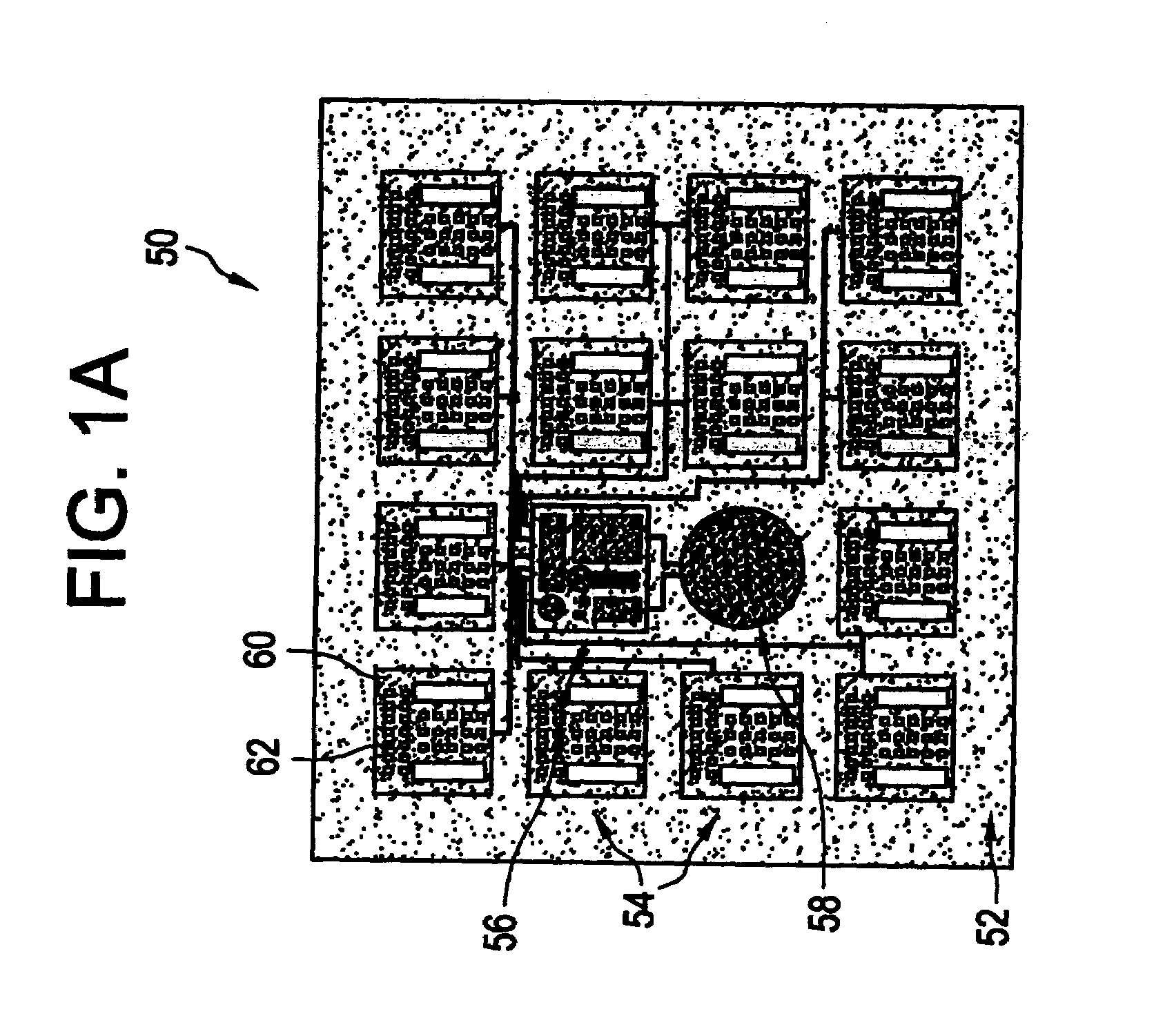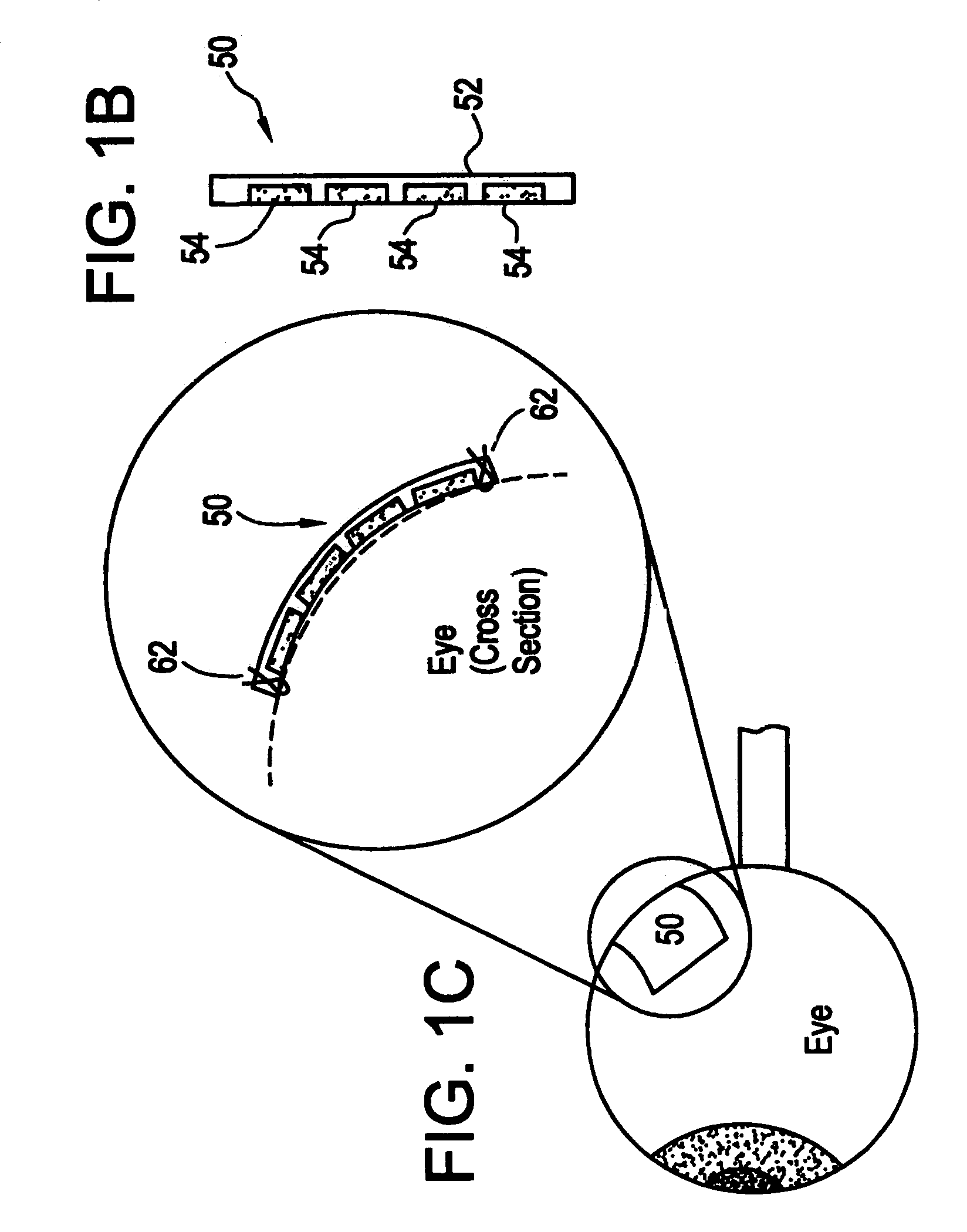Flexible microchip devices for ophthalmic and other applications
a microchip and flexible technology, applied in the field of flexible microchip devices, can solve the problems of limited drug delivery methods and difficult development of new methods and devices for drug delivery to the eye, and achieve the effects of small size, variable shape, and accurate and controlled local delivery of drugs
- Summary
- Abstract
- Description
- Claims
- Application Information
AI Technical Summary
Benefits of technology
Problems solved by technology
Method used
Image
Examples
Embodiment Construction
[0025]The eye is a relatively small organ. Both the inside and outside surfaces of the eye are curved, so the size, shape, and rigidity of any device used to deliver drugs to the eye or used as a sensor in the eye is therefore important. Microchip devices can be made large or small, depending on the specific requirements of the particular application. The substrates for these microchips can be composed of semiconductors or other material that protects the contents of the reservoirs until it is desired to release them or expose them to the surrounding environment. For small devices, the shape and rigidity of the substrate material is not as important as it is for larger devices. Some typically rigid substrate materials (e.g., silicon) can be made flexible, for example, if they are made thin enough. However, as a flat, rigid microchip is enlarged or made thicker, it is less able to conform to the curvature of the eye. This can be a problem if it is necessary for the entire surface of ...
PUM
 Login to View More
Login to View More Abstract
Description
Claims
Application Information
 Login to View More
Login to View More - R&D
- Intellectual Property
- Life Sciences
- Materials
- Tech Scout
- Unparalleled Data Quality
- Higher Quality Content
- 60% Fewer Hallucinations
Browse by: Latest US Patents, China's latest patents, Technical Efficacy Thesaurus, Application Domain, Technology Topic, Popular Technical Reports.
© 2025 PatSnap. All rights reserved.Legal|Privacy policy|Modern Slavery Act Transparency Statement|Sitemap|About US| Contact US: help@patsnap.com



